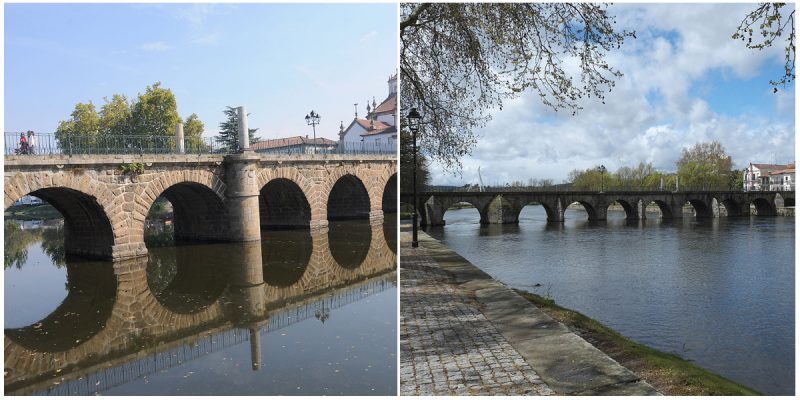The Roman Bridge in Chaves, Portugal, is a medieval bridge which was constructed in 78AD during the reign of the emperor Flavio Vespasiano. The local name is Trajan’s Bridge after the Roman Emperor Trajan.
During Trajan’s empire, in 104, commemorative columns were erected dedicated to the Flavian locals who constructed the bridge and to Emperor Caesar Vespasianus Augustus.
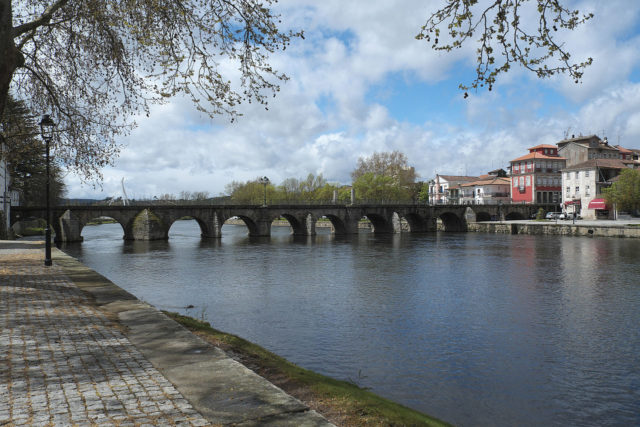
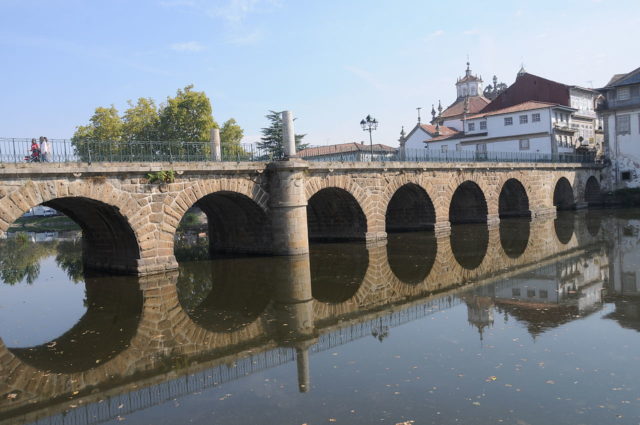
The Romans founded Chaves and because of the hot springs found there, they named it Aquae Fluvia. During this period, the town was very important and the bridge allowed it to be easily accessed. Situated on the Tamega River, the bridge is over 150 yards long and spans the river in 12 arches.
On the left bank, there are two arches which are higher than the others and the four arches on the right bank of the river are covered by warehouses. On the surface, the bridge structure is marked by a stone cornice and there are a number of gargoyles.
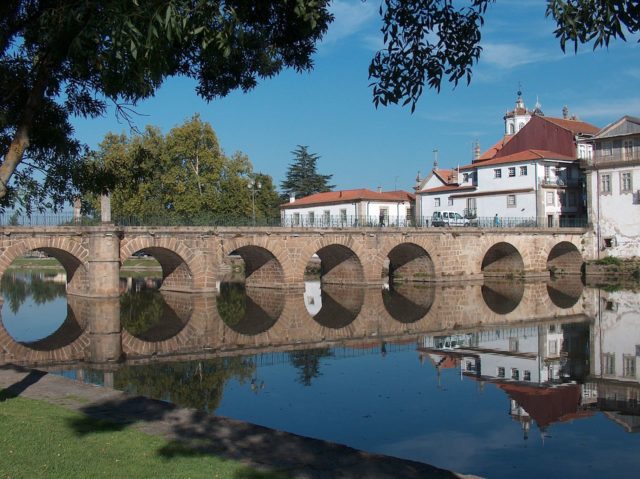
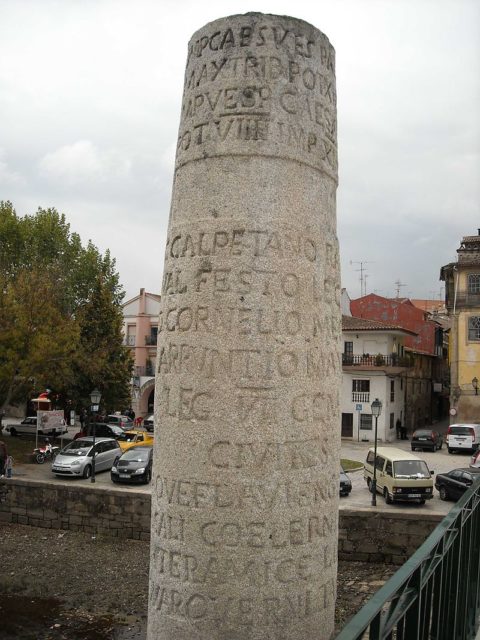
Over the centuries the bridge has undergone many alterations and modifications. In 1738, the columns were removed by the orders of the colonel Vasconcellos. They were separated, one being placed in the military square and the other as a marker. He ordered two new columns to be placed on the bridge. After the earthquake on 1 November 1755, the bridge was slightly damaged.
It is believed that the bridge included 18 arches until that year, and in a report by Antonio Manuel de Novais Mendonca, in 1758, the bridge included 12 arches. Another drawing of the bridge from 1762 also shows it with 12 arches and the two columns are not removed, they are on the city side of the river.

The two end columns were decorated with the Portuguese coat-of-arms and a crown with a fleuron. These symbols were placed on the columns at the time of the inauguration of the Portuguese Republic. A metallic passageway was constructed over the bridge in 1913 by Francisco Alves Carneiro de Lamadarcos.
Today, the bridge is still in use and continues to carry local traffic across its stone arches. It is an important part of the history of Chaves and is one of the best-known tourist attractions in the city.
